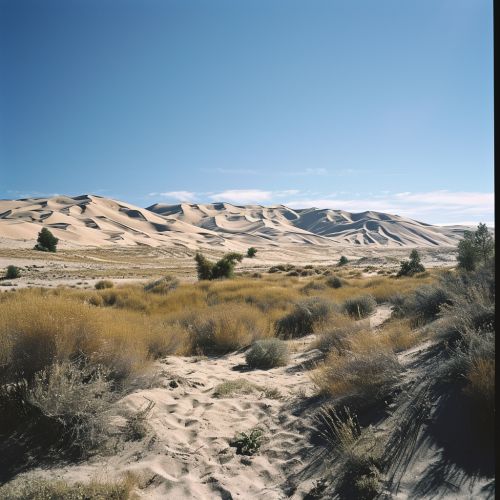Kelso Dunes
Introduction
The Kelso Dunes, also known as the Kelso Dune Field, is a spectacular sand dune system located in the Mojave National Preserve in the U.S. state of California. Covering an area of 45 square miles, it is one of the most extensive dune fields in the United States.


Geography
The Kelso Dunes are located in the southeastern part of the Mojave National Preserve, near the town of Kelso. The dunes rise abruptly from the desert floor, reaching an elevation of nearly 650 feet at their highest point. They are surrounded by a variety of desert habitats, including creosote bush scrub, Joshua tree woodland, and desert wash communities.
Formation and Geology
The Kelso Dunes are composed primarily of quartz and feldspar grains that have been carried by the wind from the nearby Mojave River basin. The dunes began forming approximately 25,000 years ago, during the Pleistocene epoch, when the area was much wetter than it is today. As the climate dried, lakes and rivers shrank, leaving behind vast fields of sand that were then shaped by the wind into the dunes we see today.
Ecology
Despite the harsh desert conditions, the Kelso Dunes are home to a variety of plant and animal species. Among the most notable are the endemic Kelso Dunes Jerusalem cricket and the Kelso Dunes shieldback katydid, both of which are found nowhere else in the world. The dunes also provide habitat for a number of rare and endangered species, including the Mojave fringe-toed lizard and the desert tortoise.
Recreation
The Kelso Dunes are a popular destination for outdoor recreation. Activities include sandboarding, hiking, wildlife viewing, and photography. The dunes are also known for the phenomenon of "singing sand," a musical humming sound that occurs when the sand grains slide down the steep slopes of the dunes.
Conservation
The Kelso Dunes are part of the Mojave National Preserve, which is managed by the National Park Service. The preserve was established in 1994 to protect the ecological and cultural resources of the Mojave Desert. Management of the dunes focuses on balancing recreational use with the need to protect the dunes' unique geological and ecological features.
